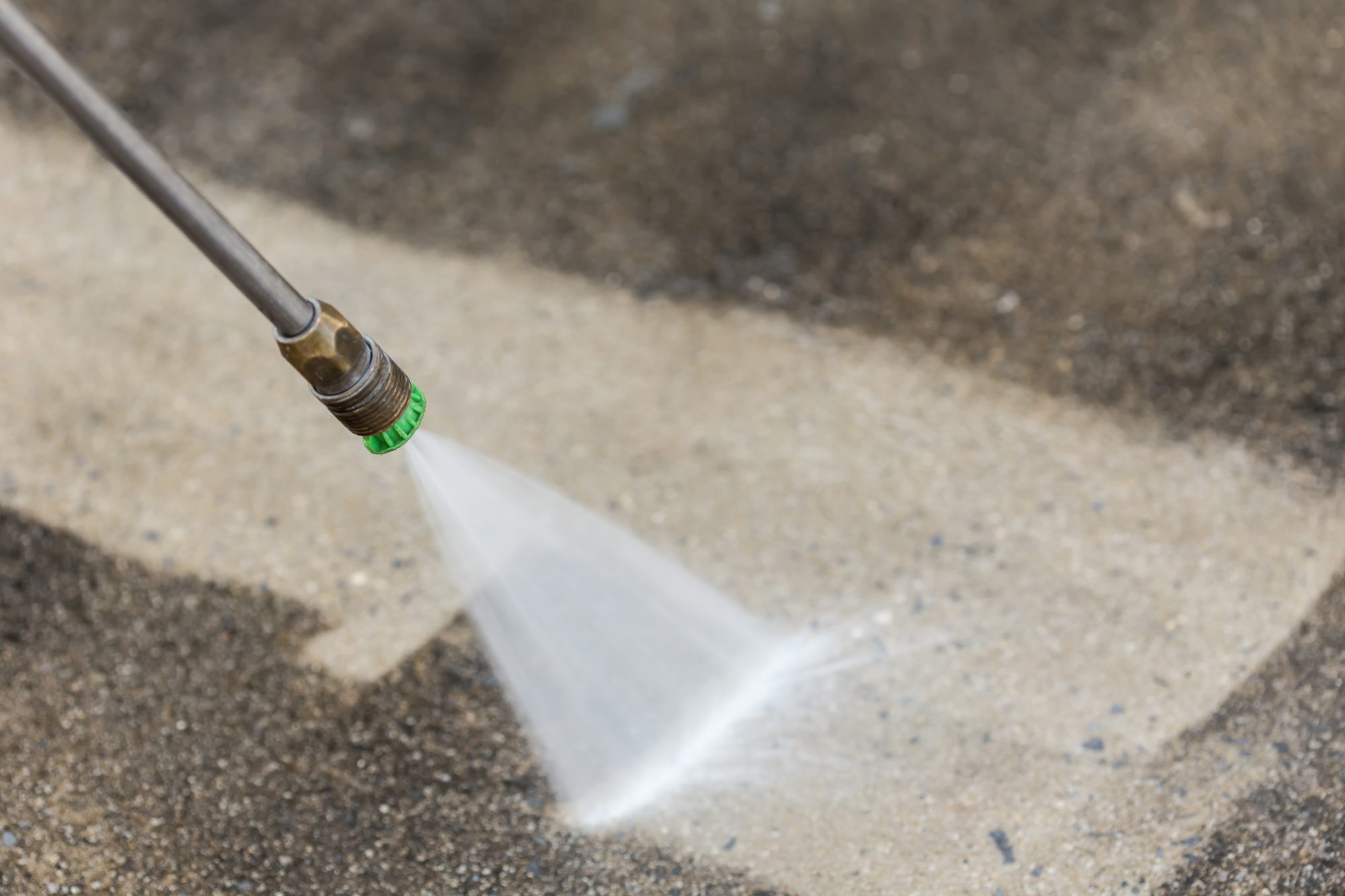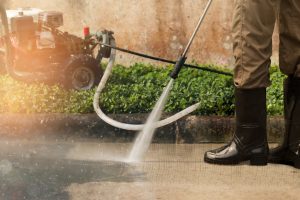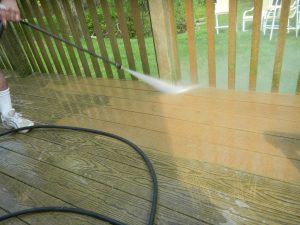When you purchase a residential pressure washer, whether it is gas powered or electric, it will usually come with 3, 4 or 5 color-coded pressure washer nozzles.
Different Colors of Pressure Washer Nozzles
The different colors are not designed for aesthetics but to show the different size of the nozzle and its intended use. Choosing the wrong nozzle for the job means you could damage the paintwork of your car or boat, cause severe damage to your wooden deck or even destroy the mortar joints in your brick driveway.
If you select the correct nozzle for the job, it is almost irrelevant what PSI (Pounds per Square Inch) and GPM (Gallons Per Minute) your pressure washer has. The nozzle is what creates the pressure in pressure washing and you will obtain the degree of cleaning you desire. Consider your garden hose; water flows out the end at a certain rate, gallons per minute (GPM). If you cover part of the end of the hose with your finger, the water speeds up and the jet reaches further. That is the principle behind how the nozzle works. Reduce the hole, and you increase the velocity.
The majority of pressure washers are sold complete with 3-4 quick connect color-coded pressure washer nozzles, some come with 5. The colors are universally recognized.
They are:
• Red
• Yellow
• Green
• White and
• Black
Each nozzle has a different size aperture and angle of spray, designed to either increase or lessen the pressure of the spray.
Which nozzle should you use? That depends on the job you need to complete.
• The red colored nozzle has a 0-degree spray pattern. It uses an extremely powerful pinpoint spray and is used for removing difficult stains on hard, unpainted surfaces like metal or concrete. This nozzle is not designed for use on wood or siding as the power delivered would cause damage to soft surfaces. It is called the cutting nozzle and will cut into the surface the most. It is rarely used under normal circumstances because the spray pattern is so small, it covers so small an area, the force is so high making it unsafe to use on many surfaces, and it would take a long time to clean anything. There will be situations where the Red nozzle should be used. For example to remove caked-on dirt or mud from a driveway, or if the wand is held at the correct distance, stains from concrete. Never use this nozzle to clean your car or boat. You will remove not only any dirt but you run the risk of removing the paint as well.
• The yellow nozzle has a 15-degree spray, referred to as the chiseling nozzle, and is intended for extremely concentrated cleaning of unpainted surfaces. The spray this nozzle produces delivers a 15-degree wide sheet of water when it hits the surface you are cleaning at a recommended distance of 3 feet. This nozzle can be used to strip paint, grease, and grime from hard surfaces, as well as dirt and debris from sidewalks, concrete or brick walkways, and unpainted brick or stucco. This nozzle can be used to clean concrete or barrel roof tiles, but caution should be employed so as not to damage the tiles. Start at a distance greater than 3 feet at an angle of 45-degrees and move closer if necessary to remove the stains and debris. Never use this nozzle on siding or shingle roofs. You will suffer damage.
• The green, 25-degree nozzle is probably the most widely used nozzle in the set. It produces a 25-degree spray pattern and although the pressure is not as great as the 15-degree nozzle it still produces enough spray power to be the standard cleaning nozzle for most applications. Used for jobs like cleaning vinyl or aluminum siding, flushing away dirt from sidewalks, revitalizing metal and vinyl furniture and other surfaces, as well as moving wet leaves from driveways and yards.
This nozzle is also the ideal choice when it comes to cleaning your roof. Depending on your location, roofs do need periodic cleaning, whether it is a tile or shingle roof. In areas like South Florida, roofs are seemingly prone to excessive algae or mildew growth, especially if it is white in color. White roofs reflect the sun’s UV rays, but contribute to moisture retention and mildew problems, more so than darker roofs. Using the green nozzle in combination with a previously applied detergent is the best way to clean your Southern Florida roof.
• The white nozzle has a 40-degree spray pattern and is the largest angle of spray used for cleaning surfaces quickly. This nozzle can also be used for rinsing previously cleaned items where some chemical cleanser has been used. It is also ideal for the initial step in your roof-cleaning task. Start by rinsing the roof with clean water using the white nozzle working from the ridge down. Then you can switch to the green, 25-degree nozzle to really clean the surface. This is also the one to use if you wish to pressure-wash your car, boat, RV or other painted or delicate surfaces, such as painted siding or vinyl.
• If your pressure washer comes with 5 nozzles, then you will most likely have a black one as the fifth.
This black nozzle is low pressure and is used to apply a cleaning solution to whatever surface you have to clean. It is sometimes referred to as the soap tip. This is the only nozzle that you can use with cleaning solutions. It has a 65-degree spray pattern, wide enough to cover a large area at a time and produces a low-pressure spray.
Cleaning your RV, car or boat is a simple task when the right pressure washer nozzle is used. In Southern Florida, where temperatures average in the low to mid-eighties in the summer but can climb to the high nineties, washing your vehicle or boat should be done in the shortest possible time to prevent the soapy water drying on the vehicle’s surface and spoiling your work.
Use the black soap tip to apply the cleaning solution to the whole of the vehicle/boat, working from the top to the bottom. Then change to the white nozzle and quickly spray the same areas in the same order to rinse off the cleaning solution. The white nozzle is powerful enough to clean the dirt and grime from the vehicle, but gentle enough not to damage the paintwork.
Another type of pressure washer nozzle available is the Turbo/Rotary nozzle.
They come in two different types: regular style and spring loaded. Both give the user the best of two other nozzles. A rotary nozzle acts as a zero degree tip combined with a circular motion of a 25-degree nozzle that can cover an area of 3-8 inches depending on the distance from the surface. It will blast away stubborn stains, clean walls, strip paint and much more.
If the rotary nozzle is spring loaded, then it can be used at any angle, unlike the regular rotary/turbo nozzle, which must be pointing in a downward direction to enable it to spin.
Armed with the details of which nozzle does what, you should have no difficulty in choosing the correct nozzle for your job and get it completed in the shortest possible time.
Happy pressure-washing.




